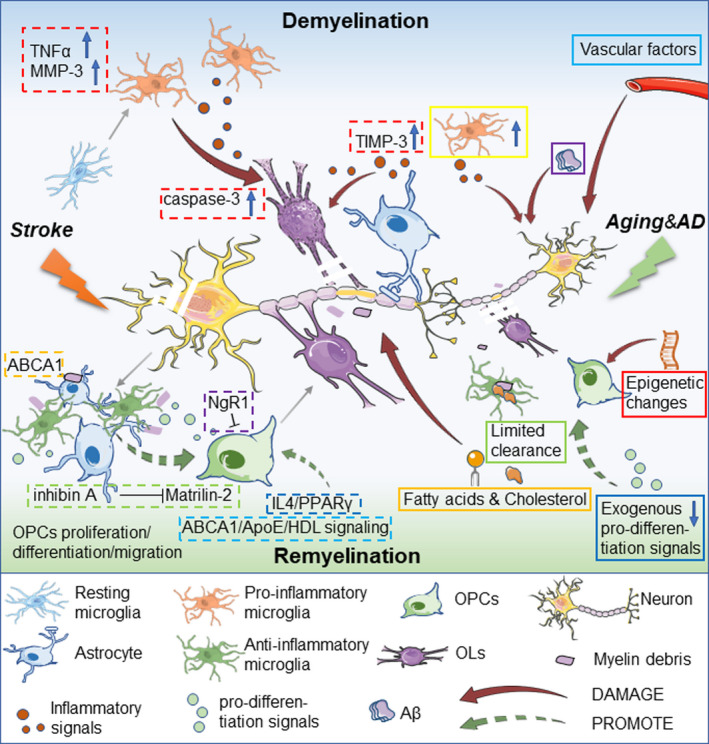FIGURE 1.

Demyelination and remyelination processes in aging, AD, and stroke. In aging and AD, vascular factors, microglial/astrocytic inflammatory factors, and β‐amyloid (Aβ) harms myelin integrity and OLs. Metabolism dysfunction involving fatty acids and cholesterol aggravate myelin breakdown. Epigenetic changes and absence of exogenous pro‐differentiation signals irreversibly burdens OPC proliferation/differentiation. Cholesterol limits microglia's clearance of myelin debris, which inhibits remyelination. In ischemic stroke, TIMP‐3 in astrocytes, and TNF‐α and MMP‐3 in microglia are induced, which increases caspase‐3 dependent OLs death and worsens demyelination injury. Microglia and infiltrating macrophages are activated to clear damaged myelin debris and dead neurons. Astrocytes also participate in the removal of dead cells and myelin debris through the ABCA1 pathway. Many molecular mechanisms are involved in remyelination after stroke. Reactive astrocytes secrete inhibin A and inhibit the expression of Matrilin‐2 in OPCs, which is not conducive to OPC differentiation and remyelination. NgR1 signaling is not conducive to the transformation of OPC into OLs. The cholesterol synthesis‐related ABCA1/ApoE/HDL signaling pathway promotes the migration of OPCs and the maturation of OLs after stroke. Interleukin‐4/PPARγ signal axis promotes OPC differentiation and maturation
